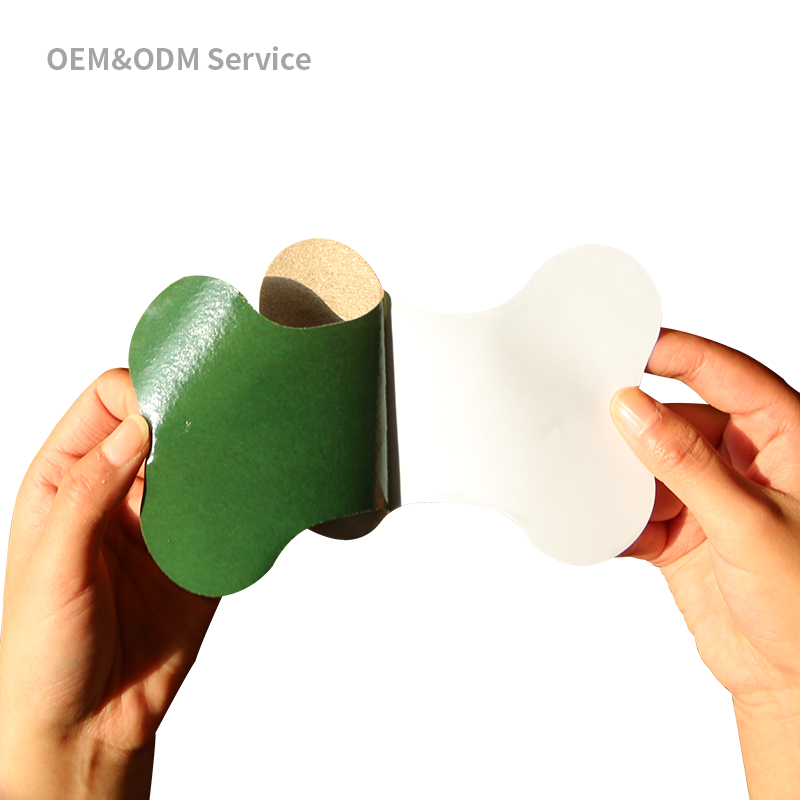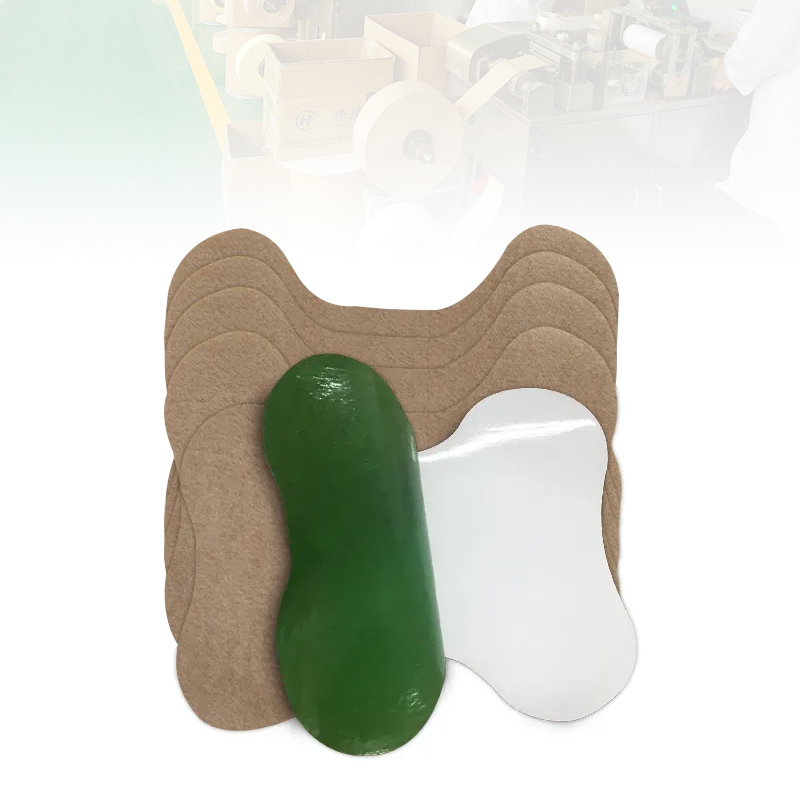Can I Add Scents or Sensory Features to Custom Lumbar Pain Relief Patches?
The demand for innovative healthcare solutions has led to an increasing interest in enhancing traditional products with additional features that appeal to the senses. In the world of pain relief, Custom Lumbar Pain Relief Patches have emerged as a popular choice for managing discomfort and promoting well-being. But beyond the basic functionality of these patches, there’s a growing trend toward incorporating sensory features such as scents. This article explores the possibilities of adding scents and other sensory elements to Lumbar Pain Relief Patches, discussing the benefits, challenges, and considerations. We’ll also examine how working with a Lumbar Pain Relief Patches manufacturer, OEM provider, or supplier can help you achieve these goals.

1. The Appeal of Sensory Features in Lumbar Pain Relief Patches
Sensory features, such as scents, can significantly enhance the user experience by providing additional comfort and relaxation. This can be particularly beneficial in pain management, where a holistic approach that addresses both physical and emotional well-being can improve outcomes.
Aromatherapy Benefits: Adding scents to Custom Lumbar Pain Relief Patches can provide aromatherapy benefits. For instance, lavender is known for its calming properties, while eucalyptus can help clear the mind and improve focus. These scents can complement the pain-relieving effects of the patch, offering a more comprehensive therapeutic experience.
Enhanced User Experience: Sensory features like scents can make the application of the patch a more pleasant experience, encouraging regular use and adherence to treatment. This can be particularly useful in managing chronic pain, where consistent use of the product is crucial.
Brand Differentiation: Incorporating unique scents or sensory features into your patches can set your product apart from competitors. Private Label Lumbar Pain Relief Patches with distinctive scents can become a signature offering, helping to build brand recognition and loyalty.
2. How to Add Scents to Lumbar Pain Relief Patches
Adding scents or other sensory features to Lumbar Pain Relief Patches involves a careful balance of formulation, design, and testing. Collaborating with a Lumbar Pain Relief Patches OEM or manufacturer is essential to ensure that the sensory features do not compromise the patch’s efficacy.
Selecting the Right Scents: The choice of scent should align with the therapeutic goals of the patch. For example, calming scents like chamomile or sandalwood may be suitable for patches intended for relaxation and stress relief, while invigorating scents like peppermint or citrus could be used in patches designed for energizing or muscle recovery.
Incorporating Scents into the Patch: Scents can be infused into the adhesive layer of the patch or added as a separate component within the patch’s structure. The method of incorporation will depend on the desired intensity of the scent and how long the scent needs to last.
Testing for Efficacy and Safety: It’s crucial to test the patch to ensure that the added scents do not interfere with the delivery of the active ingredients or cause skin irritation. Working with an experienced Lumbar Pain Relief Patches manufacturer will help ensure that the product meets all safety and efficacy standards.
3. Other Sensory Features to Consider
Beyond scents, there are other sensory features that can be incorporated into Lumbar Pain Relief Patches to enhance the user experience.
Heating or Cooling Sensations: Some patches can be designed to provide a warming or cooling sensation when applied to the skin. This can help soothe sore muscles or joints and enhance the pain-relieving effects of the patch.
Textured Surfaces: Adding a textured surface to the patch can provide gentle massage-like effects, which may help with pain relief and improve blood circulation in the affected area.
Color and Visual Appeal: Although not a sensory feature in the traditional sense, the color and design of the patch can impact user perception and satisfaction. Bright, cheerful colors or calming designs can make the patch more visually appealing, contributing to overall user satisfaction.
4. Benefits of Adding Scents and Sensory Features
Incorporating scents and sensory features into Lumbar Pain Relief Patches can offer several benefits, both for consumers and businesses.
Enhanced Therapeutic Experience: The combination of pain relief and aromatherapy or sensory stimulation can provide a more comprehensive therapeutic experience, addressing both the physical and emotional aspects of pain management.
Increased Consumer Appeal: Sensory features can make the patches more attractive to consumers, particularly those who value holistic or multi-sensory approaches to healthcare. This can lead to higher sales and greater market penetration.
Brand Loyalty: Offering a product with unique sensory features can help build brand loyalty. Consumers who have a positive experience with a particular scent or sensory feature are more likely to become repeat buyers and recommend the product to others.
5. Considerations and Challenges
While adding scents and sensory features to Lumbar Pain Relief Patches offers many advantages, there are also important considerations and challenges to keep in mind.
Compatibility with Active Ingredients: The primary function of a pain relief patch is to deliver active ingredients effectively. It’s essential to ensure that any added scents or sensory features do not interfere with the delivery or efficacy of these ingredients.
Allergenic Potential: Scents, particularly natural essential oils, can sometimes cause allergic reactions or skin sensitivities in certain individuals. It’s important to choose hypoallergenic scents and conduct thorough testing to minimize the risk of adverse reactions.
Cost Implications: Adding sensory features can increase the cost of production, which may affect pricing. It’s important to balance the added value of these features with the potential impact on profit margins and market positioning.
Regulatory Compliance: Depending on the region and the specific ingredients used, there may be regulatory hurdles to overcome when adding scents or other sensory features to a healthcare product. Partnering with a knowledgeable Lumbar Pain Relief Patches Supplier can help navigate these challenges.
6. Working with a Lumbar Pain Relief Patches Manufacturer
To successfully add scents or sensory features to your patches, it’s crucial to work with an experienced Lumbar Pain Relief Patches manufacturer or OEM provider. These partners can guide you through the process, from concept to final product, ensuring that the patches meet all necessary standards and deliver the desired user experience.
Expertise in Formulation: A reputable manufacturer will have the expertise needed to incorporate scents and sensory features without compromising the efficacy of the patch. They can also advise on the best methods for scent incorporation and testing.
Customization Options: Whether you’re developing Private Label Lumbar Pain Relief Patches or launching a new product line, a good OEM provider will offer a range of customization options, allowing you to create a product that aligns with your brand and market needs.
Regulatory Knowledge: Navigating the regulatory landscape can be challenging, particularly when introducing new features to a healthcare product. Partnering with a manufacturer who understands these regulations ensures that your product is compliant and ready for market.
Related Questions and Answers
What types of scents are most commonly used in Custom Lumbar Pain Relief Patches?
- Common scents include lavender, eucalyptus, peppermint, and chamomile, each offering different therapeutic benefits such as relaxation, focus, or invigoration.
Can adding scents to Lumbar Pain Relief Patches cause skin irritation?
- While it’s possible, using hypoallergenic scents and conducting thorough testing can minimize the risk. Always choose scents that are known to be gentle on the skin.
Are there any sensory features besides scents that can be added to Lumbar Pain Relief Patches?
- Yes, other features include heating or cooling sensations, textured surfaces for massage effects, and visually appealing colors or designs.
What are the cost implications of adding sensory features to Lumbar Pain Relief Patches?
- Adding sensory features can increase production costs. However, the added value can justify a higher price point, depending on your target market and brand positioning.
How do I ensure that added scents do not interfere with the patch’s effectiveness?
- Working with an experienced Lumbar Pain Relief Patches manufacturer is essential. They can test the patch to ensure that the scents do not affect the delivery or efficacy of the active ingredients.
Conclusion
Adding scents and other sensory features to Custom Lumbar Pain Relief Patches offers a unique opportunity to enhance the user experience, differentiate your product, and potentially increase market appeal. Whether through the calming effects of aromatherapy or the soothing sensation of a textured surface, these features can transform a standard pain relief patch into a multi-sensory therapeutic experience.
However, achieving these benefits requires careful planning, testing, and collaboration with a trusted Lumbar Pain Relief Patches manufacturer or OEM provider. By considering the compatibility of scents with active ingredients, minimizing allergenic potential, and navigating regulatory requirements, you can successfully create a product that stands out in the competitive healthcare market.
With the right approach, adding scents and sensory features to your patches can provide significant value to consumers, enhancing both their well-being and their overall experience with your brand.






